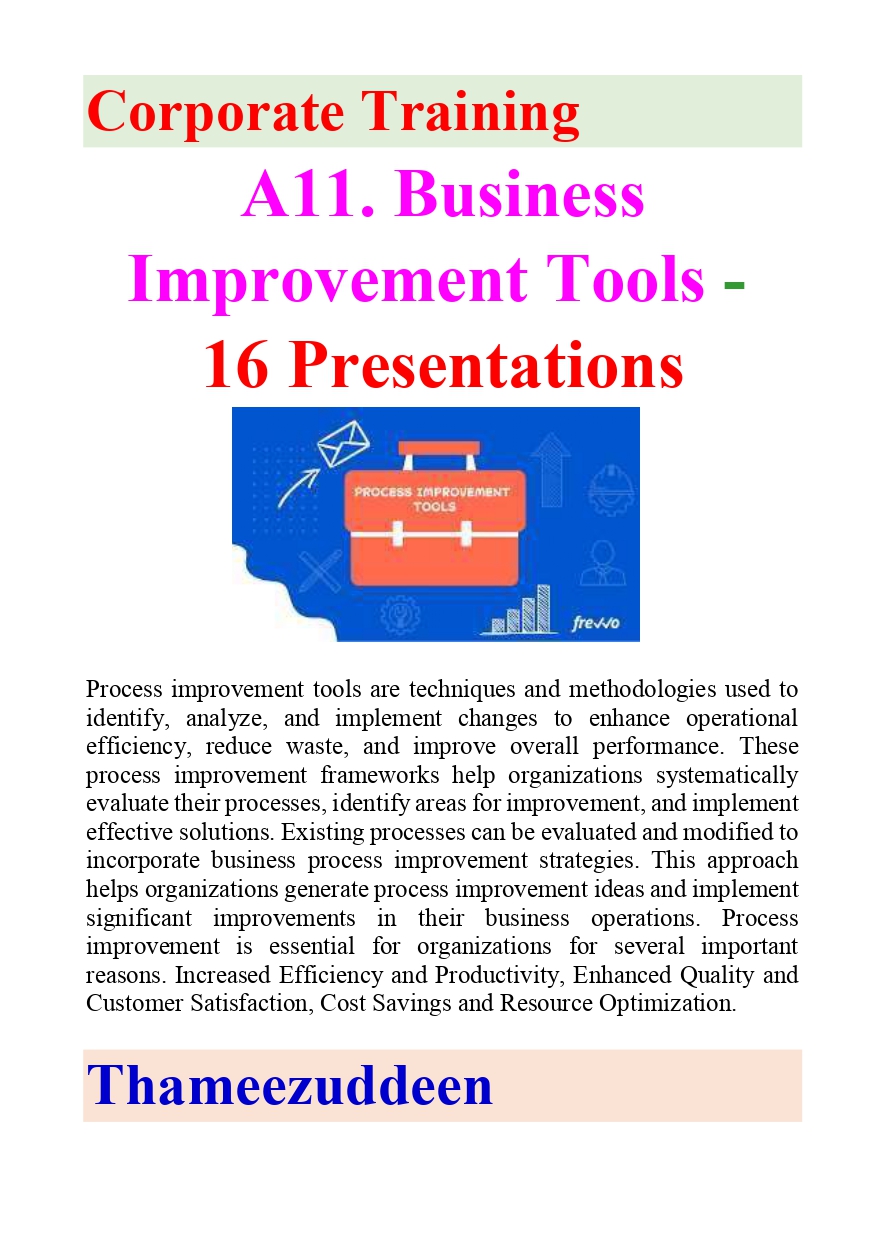Enhanced Quality and Customer Satisfaction: Process improvement identifies and reduces defects, errors, and process variations. Organizations can enhance the consistency, reliability, and accuracy of their products or services by implementing quality management techniques and tools. Improved quality leads to higher customer satisfaction, increased loyalty, and a positive brand reputation.
Cost Savings and Resource Optimization: Process improvement initiatives help organizations identify and eliminate various forms of waste, such as overproduction, excess inventory, unnecessary transportation, and rework. Organizations can optimize processes by reducing costs associated with non-value-added activities, improving resource allocation, and minimizing unnecessary expenses.
Better Agility and Adaptability: Process improvement enables organizations to become more agile and adaptable in response to changing market conditions, customer demands, and emerging trends. To improve business processes, organizations need to continuously evaluate processes and quickly adapt their business operations, products, or services to stay ahead of the competition and seize new opportunities.
Improved Employee Engagement and Empowerment: Involving employees in process improvement initiatives supports a culture of continuous learning, innovation, and problem-solving. Engaged employees are more motivated, proactive, and committed to achieving organizational goals. Process improvement empowers employees by allowing them to contribute their ideas and expertise to drive positive change.
Continuous Learning and Innovation: Process improvement encourages organizations to foster a culture of constant learning, innovation, and experimentation. It provides opportunities for employees to identify and implement improvements, test new ideas, and share best practices.
A comprehensive assessment of the organization's specific context, objectives, and constraints should guide the tool selection process. It is often beneficial to engage stakeholders, and seek input from the individuals directly involved in the improvement efforts. The best process improvement tool for the job depends on what you are trying to accomplish. Consider the desired outcome or goal of the process improvement initiative. Are you aiming to reduce defects, improve cycle time, enhance customer satisfaction, or achieve cost savings? Different process improvement tools may be more effective in achieving specific outcomes, so align the tool selection with the desired results.

